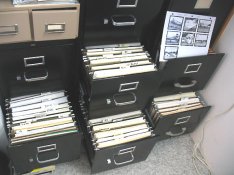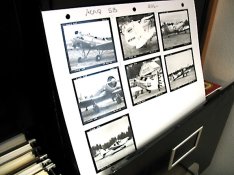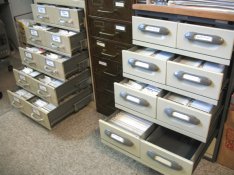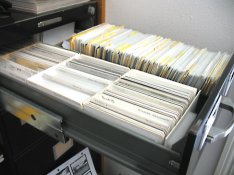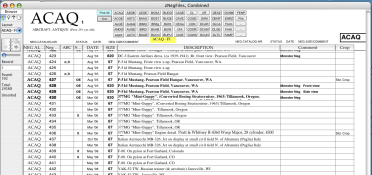Around 1975 (or so), I recognized the need to set up a filing system that would serve me the rest of my life, regardless of how many negatives I would eventually accumulate.
My negative archive was growing faster than I could keep it in order, things were getting out of hand.
Browsing through a mish-mash of negatives and proof sheets led me to conceive a system of cataloging and filing that has served me well. Here's the system and a few photos 35 years later...
I catalog and file by topic.
I use an alpha-numeric catalog system.
The 4-letter alpha component identifies the topic.
The numeric component identifies the sequential negative number.
Example: ACAQ 427 is negative #427 in a category of Antique Airplanes.
The catalog number along with the date and camera info is written on each negative.
The negatives are filed in individual sleeves in a file drawer, along with a proof.
A second proof is filed sequentially with all other ACAQ proofs in a Pendaflex file drawer.
As you can see, I use a FileMaker Pro database to assign negative numbers and record the data.
It's a lot easier than that old manual typewriter back in '75.
I have about 250 topic categories, ranging from ANDO (Animals, Domestic) to WYGE (Wyoming, General).
If I'm just browsing, looking for something different to print, I thumb thru some proof sheets.
Just looking, and reminiscing...
The photos show my roll film (35 mm, 6x6, 6x7, 6x12, 6x15, & 6x17) and 4x5 negative filing drawers.
I use standard Pendaflex hanging files for the proof sheets. I mount the proofs onto archival card stock.
I could just as easily use plastic file pages, but mixing proof sizes complicates things.
I'm not suggesting that you use my system, but there might be one or two ideas that may be of use to you.
I'd be the last one to brag that my way is the best way.
It's a lot of work, but I'm proud of my legacy that will be passed on after my last negative is taken...
Reinhold
www.classicBWphoto.com







 .
.


